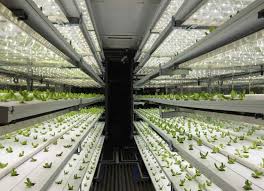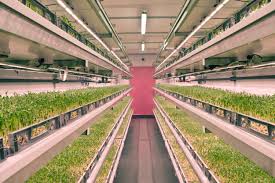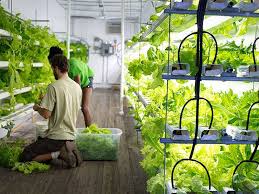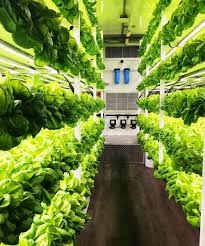Vertical farming is an innovative agricultural method that involves growing crops in vertically stacked layers or on vertically inclined surfaces. This approach aims to optimize space, particularly in urban environments where traditional farming land is scarce.
By integrating technology and sustainable practices, vertical farming can produce fresh produce throughout the year while minimizing environmental impacts.
This article explores the various benefits of vertical farming, including space efficiency, resource conservation, reduced transportation costs, enhanced crop yields, and year-round production.
Space Efficiency
Vertical farming maximizes the use of available land by growing plants in stacked layers. This is especially beneficial in urban areas where land is limited. Key points include:
1. Land Optimization: Vertical farming systems can yield a greater quantity of crops per square foot compared to traditional farming methods.
2. Urban Integration: By utilizing vertical space, vertical farms can be established in cities, bringing food production closer to consumers.
3. Compact Design: Many vertical farming systems can fit into small areas, such as rooftops or unused buildings, making them adaptable to various urban landscapes.
Resource Conservation
Vertical farming promotes efficient use of resources, particularly water and energy. Important aspects include:
1. Water Efficiency: Vertical farms often use hydroponic or aeroponic systems, which require significantly less water than traditional soil-based agriculture.
2. Nutrient Recycling: Many vertical farming systems recirculate water and nutrients, reducing waste and improving efficiency.
3. Energy Savings: Advanced technologies can optimize energy use for lighting, heating, and cooling, leading to lower overall consumption.
Reduced Transportation Costs

By locating food production closer to urban markets, vertical farming can significantly cut transportation costs. Key benefits include:
1. Shortened Supply Chains: Local production reduces the distance food must travel, leading to fresher produce for consumers.
2. Lower Carbon Footprint: Reduced transportation distances contribute to lower greenhouse gas emissions associated with food delivery.
3. Increased Accessibility: Urban vertical farms can provide fresh produce to communities that may lack access to traditional grocery stores.
Enhanced Crop Yields
Vertical farming can result in higher crop yields compared to conventional farming methods. Key factors include:
1. Controlled Environments: Vertical farms utilize controlled conditions that promote optimal growth, resulting in faster and more robust crop production.
2. Maximized Photosynthesis: Vertical systems can be designed to ensure that plants receive adequate light from all angles, improving photosynthesis and growth rates.
3. Continuous Harvesting: Many vertical farming systems allow for staggered planting and harvesting, enabling a steady supply of produce.
Year-Round Production
Vertical farming enables continuous crop production regardless of external environmental conditions. Important aspects include:
1. Climate Control: Vertical farms can maintain optimal temperature, humidity, and light levels, allowing crops to grow year-round.
2. Flexibility in Crop Selection: Farmers can choose to grow a variety of crops in different seasons, maximizing output and diversifying production.
3. Stability of Food Supply: Year-round production contributes to food security by providing a consistent supply of fresh produce, even in adverse weather conditions.
Year-Round Production
Vertical farming enables continuous crop production regardless of external environmental conditions. Important aspects include:
1. Climate Control: Vertical farms can maintain optimal temperature, humidity, and light levels, allowing crops to grow year-round.
2. Flexibility in Crop Selection: Farmers can choose to grow a variety of crops in different seasons, maximizing output and diversifying production.
3. Stability of Food Supply: Year-round production contributes to food security by providing a consistent supply of fresh produce, even in adverse weather conditions.
Read Also: 18 Medicinal Health Benefits Of Anamirta cocculus (Indian Fishberry)
Environmental Impact

Vertical farming has several positive environmental impacts compared to traditional agriculture. Key points include:
1. Reduced Land Use: Vertical farms require significantly less land area to produce the same amount of food, preserving natural ecosystems.
2. Lower Water Usage: These systems often use hydroponics or aeroponics, which consume up to 90% less water than conventional farming.
3. Decreased Pesticide Use: With controlled environments, vertical farms often rely less on pesticides, leading to healthier ecosystems and less chemical runoff.
Urban Agriculture Opportunities
Vertical farming presents unique opportunities for urban agriculture. Important considerations include:
1. Local Food Production: Establishing vertical farms in urban areas brings food production closer to consumers, reducing transportation costs and carbon footprints.
2. Revitalization of Underutilized Spaces: Rooftops, vacant buildings, and warehouses can be transformed into productive vertical farms, contributing to urban renewal.
3. Community Engagement: Urban vertical farms can foster community involvement and education about sustainable practices, enhancing food awareness.
Technological Innovations
Technology plays a crucial role in the success of vertical farming. Key innovations include:
1. Automated Systems: Advanced sensors and automation can monitor and control conditions such as temperature, humidity, and nutrient levels, optimizing plant growth.
2. LED Lighting: Energy-efficient LED lights provide the specific wavelengths of light needed for photosynthesis, allowing for optimal growth without relying on natural sunlight.
3. Data Analytics: Utilizing data from sensors can help farmers make informed decisions about crop management, improving yields and resource use.
Economic Advantages
Vertical farming presents several economic benefits for growers and communities. Important aspects include:
1. Higher Profit Margins: By producing high-value crops such as herbs and specialty greens, vertical farms can achieve higher profit margins compared to traditional agriculture.
2. Job Creation: Establishing vertical farms can create new job opportunities in urban areas, contributing to local economies.
3. Resilience Against Market Fluctuations: Year-round production allows vertical farms to stabilize income and reduce dependency on seasonal markets.
Read Also: Poultry Disease Prevention and Management
Challenges and Considerations

Despite its many advantages, vertical farming faces several challenges that need to be addressed. Key considerations include:
1. High Initial Costs: Setting up a vertical farm can require significant investment in technology, infrastructure, and operational systems.
2. Energy Consumption: While vertical farming can save water, it can also consume large amounts of energy, particularly for lighting and climate control.
3. Market Acceptance: Educating consumers about the benefits and quality of vertically farmed produce is essential for widespread acceptance and success.
Vertical farming represents a transformative approach to agriculture, offering numerous benefits such as year-round production, reduced environmental impact, urban agriculture opportunities, technological innovations, and economic advantages.
By leveraging technology and innovative practices, vertical farming can help meet the growing demand for fresh, sustainable food in urban environments. As this method continues to evolve, it holds significant potential for addressing food security challenges and promoting sustainable agricultural practices.
Do you have any questions, suggestions, or contributions? If so, please feel free to use the comment box below to share your thoughts. We also encourage you to kindly share this information with others who might benefit from it. Since we can’t reach everyone at once, we truly appreciate your help in spreading the word. Thank you so much for your support and for sharing!
Read Also: How To Fix a Garbage Disposal Jam

